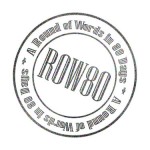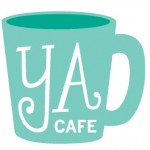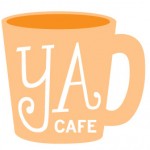Last night I finished the first full-length novel I’ve read on my Kindle. Let me say first and foremost that when I started reading said book on the Kindle, I was rather reluctant to buy into the whole e-reader hype. I wanted to like the concept of electronic books but I was afraid that the experience just “wouldn’t be the same” if I wasn’t holding the book in my hands. While the idea of having all these books in my e-library (and not on my shelves) was a happy one, I was skeptical. Something about the feel and smell of a real book seemed irreplaceable to me and I was fairly certain that the Kindle would not live up to the experience.
The verdict? It took a little getting used to, but I have become a Kindle fan. What I realized while reading this book on the Kindle is that if the story is good and the writing is engaging, the page (or in this case, the screen) fades away. This is true whether the page is an actual piece of paper or e-reader screen. In the end, good writing can transcend the medium in which it is presented.
Those who know me and know how strongly I feel about the “book as experience” are probably shocked that I have been so easily won over by the digital page. Truth is, there are advantages and disadvantages to the Kindle and the trick is finding a balance and using this tool in the way that works best for you.
Pros:
- You can store thousands of books on a device that’s smaller than one book. This frees up tons of shelf space that you can use for… what else? More books.
- The Kindle screen (unlike the iPad which is back-lit) doesn’t strain the eyes the way a computer screen would and is pretty similar to reading a printed page.
- It’s portable and great for travel (says the girl who packs a suitcase of books for a one-week trip). You can take all your books with you in your carry-on.
- You can download tons of classics for free (check out project Gutenberg).
- The Kindle has a cute little built-in keyboard for easy note-taking, which is great for reading critique pieces on-the-go.
Cons:
- Let’s face it, in terms of graphics, the Kindle still leaves much to be desired. Apple’s iPad definitely wins in the pretty department and has the lovely full-color screen, but that device has a host of other downsides (which is a whole other post topic).
- When the battery runs out, you have to charge it. Paper books don’t require batteries.
- The note-taking feature, though useful, does not export to your computer (not in any pragmatic way… at least, not yet).
In the end, I find that the Kindle is great for storing and reading average, everyday books. I am certain that there will still be plenty of books in my apartment (more than I’ll ever be able to read in a lifetime) but my shelves will now be reserved for books where the function of “book” is key. This would include signed books, art books, books where pretty pictures are important, antique books and other books that hold a special place in my heart. But for all those regular books that make it into my library but are not books I absolutely need in book form, having them digital and stored on my Kindle is a great space-saving alternative.
iggi says…












 Call me Gabi (pronounced gah-BEE). I'm a writer, freelance teacher, and a lover of books and words. I'm also the instigator of DIY MFA. iggi's my sidekick, but he thinks he's the brains behind this operation.
Call me Gabi (pronounced gah-BEE). I'm a writer, freelance teacher, and a lover of books and words. I'm also the instigator of DIY MFA. iggi's my sidekick, but he thinks he's the brains behind this operation.
 ROW80 Check-In (4)
ROW80 Check-In (4) YA Cafe Book Club: The Unbecoming of Mara Dyer
YA Cafe Book Club: The Unbecoming of Mara Dyer YA Cafe: Building Suspense
YA Cafe: Building Suspense